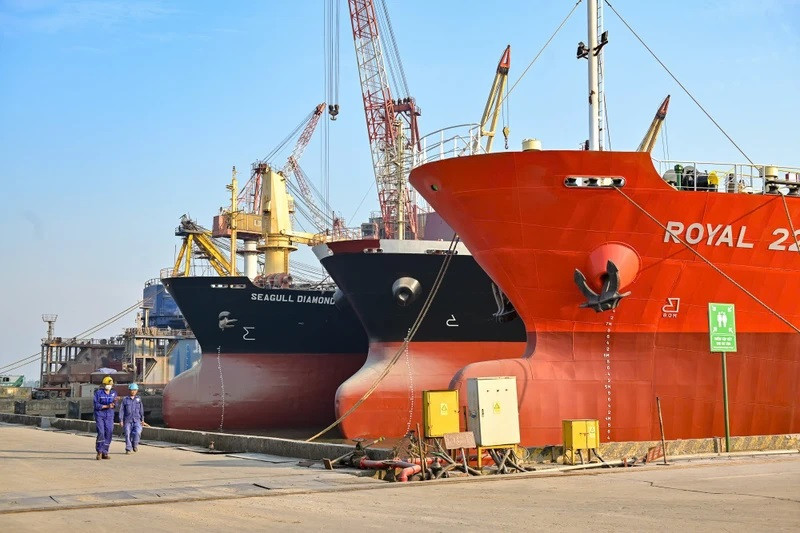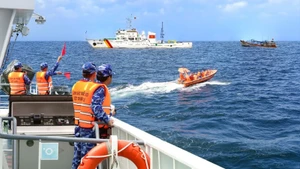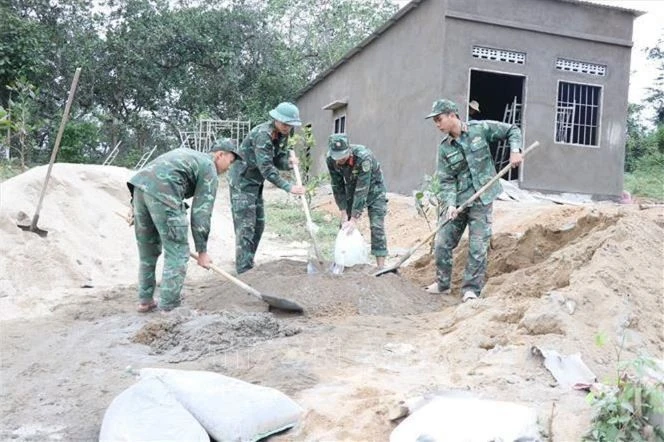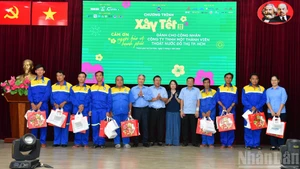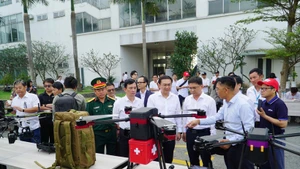Hardships of shipyard workers
At 1 AM, Nguyen Van Tuan, a worker from NASISCO’s Processing Team 4, was still diligently working on steel components of a 65,000 DWT bulk carrier.
Tuan, from Hai Duong Province, started his shipbuilding career in late 1996. Now, with nearly 30 years of experience, he has gained the highest level of a welder.
Working for Nam Trieu, Tuan met his life partner, whose family has a tradition in the shipbuilding industry, with both her parents being veteran workers.
His father-in-law used to be a master of mechanics, while his mother-in-law was also a veteran welder. They said that in the past, manual welding was mainly used, so shipbuilders had to work in a harmful environment with low productivity.
Today, thanks to advances in science and technology, Tungsten Inert Gas (TIG) and Metal Inert Gas (MIG) welding are implemented, which have significantly improved working conditions and higher productivity than manual welding techniques.
But this also places higher requirement for workers to improve their skills.
As technology develops and machinery becomes more complex, workers must frequently update their skills, learn new technology and improve their qualifications to create products that satisfy the most stringent domestic and international requirements.
Nam Trieu company always focuses on training and improving the skills of shipbuilders. Every year, the cAs technology develops and machinery becomes more complex, workers must frequently update their skills, learn new technology and improve their qualifications to create products that satisfy the most stringent domestic and international requirements.ompany organises exams to upgrade workers’ qualification levels (usually every three years for each worker).
The exam requires a theory test to sit the skills test, requiring difficult shipbuilding techniques.
With such difficulties, female shipbuilders face even greater challenges.
However, for Nguyen Thi Cuc, a grade iron welder born in 1978 with 17 years of working experience, there is “nothing significant.”
Cuc said that in production, welders always need to be highly focused and skilful, especially when handling difficult details, ensuring both techniques and quality. More importantly, they must comply with regulations on labour safety and environmental sanitation, as they have to face dangers, toxic substances and the risk of work accidents.
Young Thai ethnic female worker Vi Thi Vuong, born in 1996 in Thanh Hoa Province, is working in the steel cleaning unit of Nam Trieu company.
She shared that whether it is winter or summer, they always have to work in tanks to spray sand to clean paint and rust. With a special working environment, although fully equipped with labour protection equipment and respirators, in a closed space with a strong smell of paint and grease, it is inevitable to get paint sickness, nausea, and dizziness.
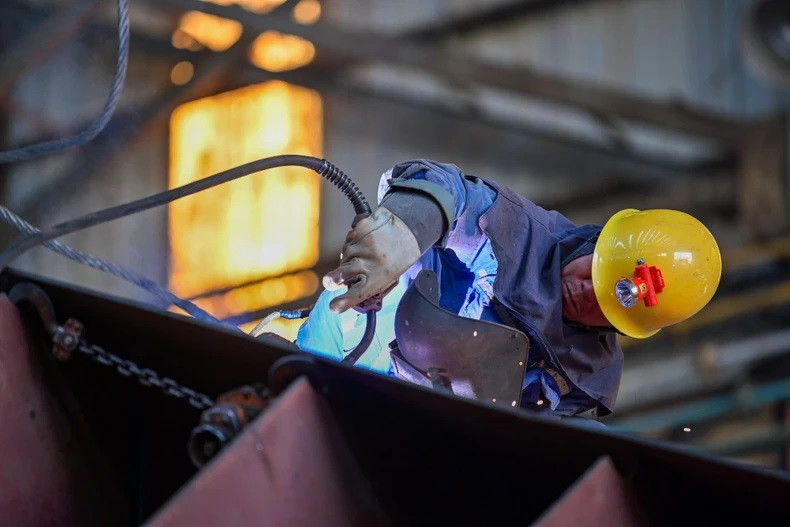 |
| A welder working at Nam Trieu Shipbuilding Company. (Photo: THE DAI) |
Devoted to the shipbuilding industry
The most challenging period for shipbuilders at Nam Trieu Company, as well as the shipbuilding industry in Vietnam and the world in general, was the economic recession of 2012-2014, when maritime transport stagnated, shipbuilding orders plummeted, and workers faced unemployment.
Tuan recalled that during this time, he and his wife had to cut their working shifts and find other jobs when they were off.
According to Nguyen Hoang Hai, Head of the Organisation-Administration Division, the tireless efforts of Nam Trieu's staff and employees over the past ten years have gained definite results. The company received more orders from both domestic and foreign partners, which ensures employment for workers for the next five years.
Hai once worked as a machinist before being promoted to manager. Coming from the grassroots level, he understands the hardships of workers more than anyone else.
Similar to Hai, Nguyen Minh Thuc, Deputy Head of the Hull Division, used to be a welder. He was born into a family with all four siblings being workers of the Nam Trieu company.
“At any position, you have to continuously learn, improve your knowledge, and accumulate experience,” he said.
Like other units in SBIC, Nam Trieu had to restructure its organisational structure. From having 8,000 workers in 2008, by 2013, the company developed a core "skeleton" of more than 500 staff and employees, many of whom were skilled workers.
In mid-2024, Nam Trieu launched the first 65,000 DWT cargo ship in a series of four, which is the largest “Made in Vietnam” ship.
According to Le Dinh Vinh, Deputy General Director of the Company, Nam Trieu has been striving to create increasingly better-quality products and has proven its capabilities to its partners.
The high-value, large-scale orders signed in the final days of 2024 are evidence of the true capabilities of Nam Trieu and SBIC and a worthy recognition of the achievements of skilled workers who are wholeheartedly committed to the shipbuilding industry.
SBIC Acting General Director Tran Manh Ha stressed that the collective of officers and shipbuilders of NASICO in particular, and the entire corporation in general, with their deep love for the profession and strong will, always have faith and are ready to face all challenges and difficulties, striving to bring the Vietnamese shipbuilding industry far on the world map.
